Boletus edulis: the king of mushrooms
2 years ago · Updated 6 months ago
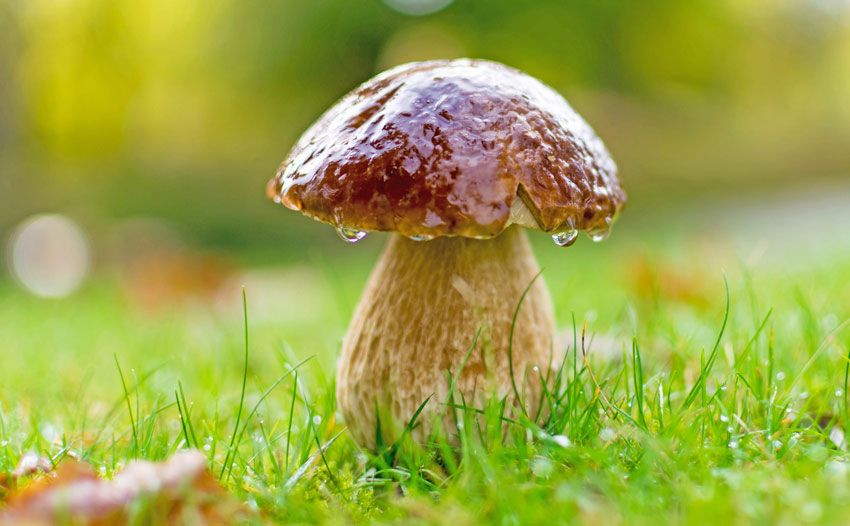
¡Boletus edulis or Cep! If you ask a mushroom picker which mushroom they prefer to pick, they will undoubtedly answer Boletus.
It is not for nothing that it is the most prized edible mushroom in cooking and has, for some time now, dethroned the milk cap mushroom. What's more, the Boletus edulis season has started with a bang and we are expecting a good boletus season.
- Characteristics of Boletus edulis
- What shape is Boletus edulis or porcini mushroom?
- How can Boletus edulis be distinguished from other types of boletus?
- When can we find Boletus edulis?
- What is the habitat of Boletus edulis?
- Tips for finding Boletus mushrooms
- Beware of Clitopilus prunulus, the Boletus lookalike
- Photographs of Boletus edulis
Characteristics of Boletus edulis
This well-known edible mushroom is widely distributed throughout our territory and is very present in the popular tradition of the places where it usually appears. Proof of this is the number of names by which the Edulis is known.
Some examples of these names are Potiron, Champignon potiron, Champignon blanc, Migueles (in the Soria region), Cep or Sureny (Catalonia), Ondo zuri (Basque Country), Porro (Aragon), Madeirudo or cogordo (Galicia). . .
It also has many different names abroad. In Italy, it is called Funghi Porcini, Cepè de Bordeaux (France), King bolete (USA), Steinpilz (Germany),. . . and so on in each of the countries where it is harvested

What does Boletus edulis mean?
The Latin name for this species is Boletus edulis. This Latin name indicates a very important characteristic: edulis in Latin means edible. Some synonyms for this edible mushroom are: Boletus solidus / Tubiporus esculentus / Boletus bulbosus.
What shape is Boletus edulis or porcini mushroom?
Once you have seen a specimen of porcini mushroom or Boletus, it is fairly easy to distinguish it because it has a fairly identifiable morphology. We explain what shape edulis mushrooms have and how to distinguish them from other edible Boletus species.
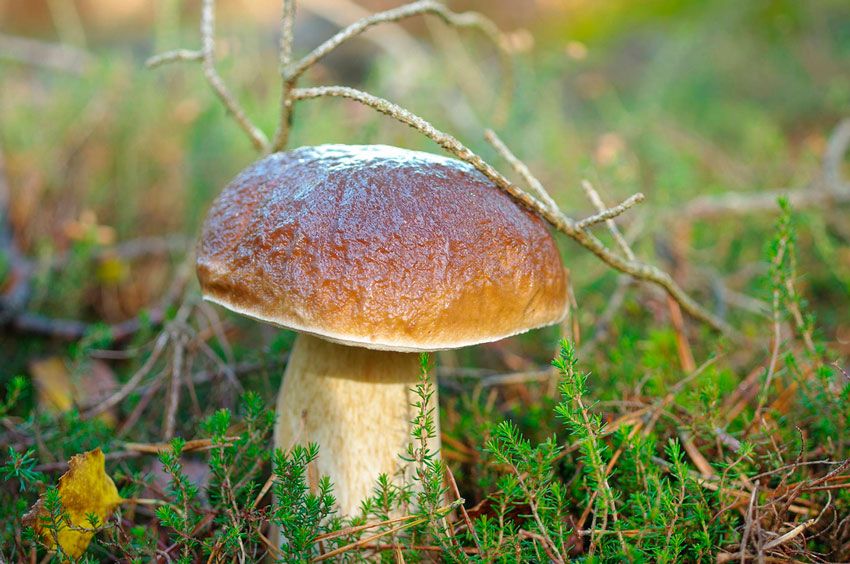
Cap
The cap of the boletus mushroom has the typical shape of this genus. In its first stage, it is semi-spherical, with a small margin surrounding the stem. Later it takes on a convex shape. Its diameter can often reach 25-30 cm or even more. Its color varies between cinnamon, brown, or light brown. It is usually darker in the center and fades toward the edge.
A characteristic feature of this species is that the edge of the cap has an almost white line.
If it is humid, it usually has a slimy cuticle when young. In a more developed state, it loses this feature.
Hymenium
The tubes of the edulis are long and free, with a length of between 12 and 22 mm depending on the age and development of the specimen. They separate easily from the flesh. Their color changes from white in early development to greenish yellow when mature. Its pores do not turn blue when cut.
Stem
Diameter between 2 and 8 cm and height between 5 and 20-22 cm. Robust and consistent, it often appears thickened in the center. This characteristic is more visible in young specimens. It has a white network, more visible on the upper part. This network contrasts with the color of the stem.
Flesh
The flesh of these specimens is tender, unalterable, and white. Firmer and harder in young specimens, it becomes spongy in mature specimens. The pleasant nutty smell of this species is another of its characteristics
How can Boletus edulis be distinguished from other types of boletus?
It is very similar to other edible boletus species such as Boletus aereus and Boletus reticulatus or summer mushroom. It is common to confuse young specimens of these species, although all are excellent edible mushrooms. It is also very similar to another of the best edible boletus mushrooms, the boletus pinophilus or pinicole.
The differences in the shape and color of the cap and stem will help us to distinguish them from each other, although experience is a great ally when it comes to finding and differentiating boletes.
The color of its cap is decisive for its identification. It has a brown tone with the edge clearly lighter than the rest of the cap.
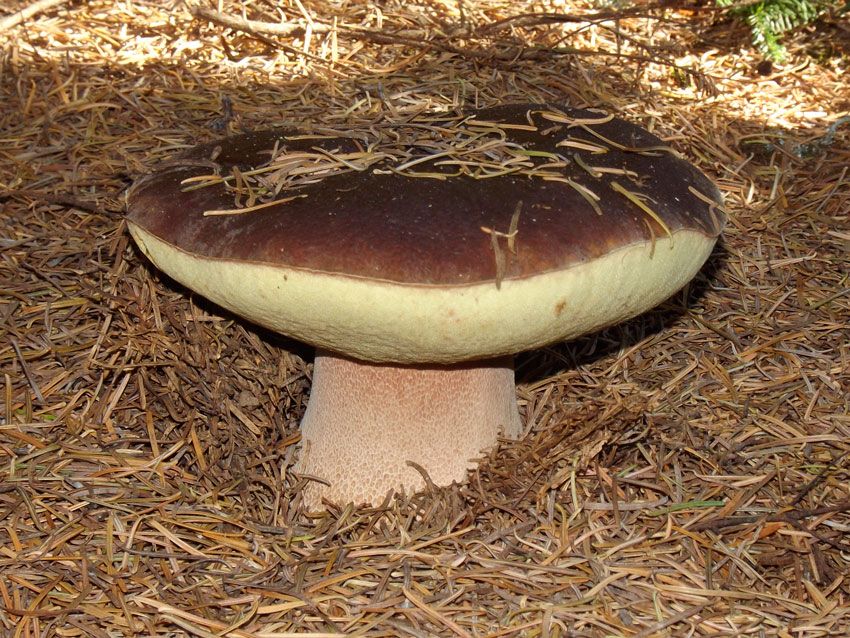
How big is Boletus edulis?
Under favorable conditions, Boletus edulis can reach a considerable size, although its cap is usually between 7 and 20 cm in diameter and its stem is generally the same height, with a thin white reticulum on the upper part.
In certain areas with special, humid climates such as the Canary Islands, it is not uncommon for each boletus season to surprise us with specimens weighing several kilograms
When can we find Boletus edulis?
It tends to appear from the end of summer until the end of autumn. Mainly after periods of rain. Its appearance cycle is approximately 10 to 14 days after rain (provided it is abundant). If there are further episodes of rain before these dates, there will be an abundant harvest of edulis mushrooms, much to the delight of mushroom pickers.
But it's not as simple as it seems. The rains must be heavy and evenly distributed. Torrential episodes do not favor the development of Boletus. It is also necessary that several days of sunshine follow the rains. This will help the soil to drain.
It is also important that there is no wind. Wind is the number one enemy of all mushrooms and can halt their development. However, not all winds are harmful, and if the wind is humid, it can even accelerate the development of mushrooms!
If we are lucky enough to have these conditions, we will have to wait between 10 and 14 days to find the first edible mushrooms.
The temperature, which should never be below 6º or above 28-30º during the day, will greatly help the development and growth of Boletus mushrooms. The ideal temperature would be between 15º and 24º. Within this temperature range, we can find any of the four edible Boletus mushrooms (pinophilus, aereus, eaestivalis, and edulis).
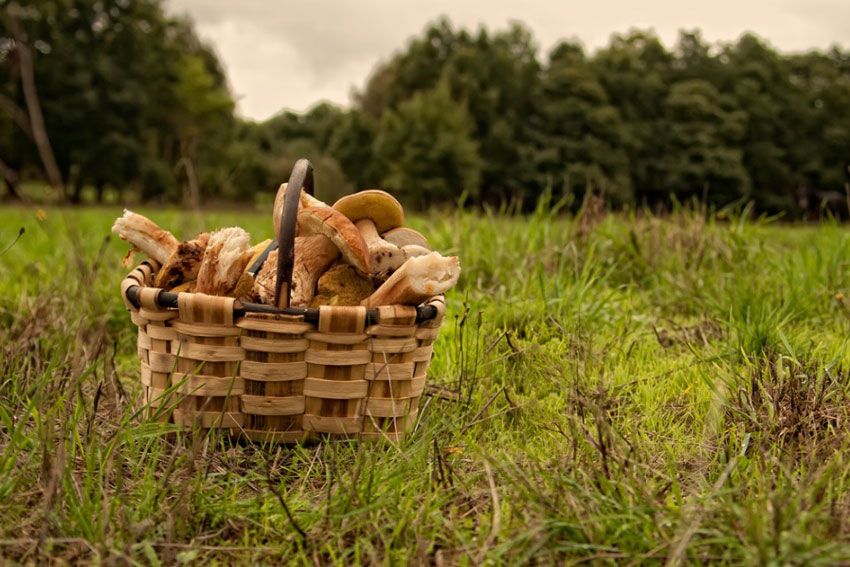
What is the habitat of Boletus edulis?
Porcini mushrooms, squash mushrooms, edulis, etc. are mushrooms that adapt to a wide variety of soils. They prefer acidic soils under oak, beech, pine, and chestnut trees, as well as among heather, ferns, and rockroses. This ease of growth is undoubtedly one of the reasons for their popularity.
This species of boletus grows in association with shrubs, plants, and trees. This symbiosis benefits both the plant species and the mushroom, as both can capture nutrients with the help of the other. As a result, these species are more resistant to frost and drought. This also facilitates the development of our boletus mushrooms.
Distribution of the edulis
This edible mushroom is widely distributed throughout the northern hemisphere. It is found in Europe, North America, and Asia, and has been introduced to South Africa, New Zealand, and Australia.
It needs high rainfall, between 500 and 700 ml per year. It also requires siliceous, well-drained soil. In terms of altitude, it prefers altitudes between 500 and 1300 m above sea level, where it appears frequently. It can also be harvested in mid- and low-mountain areas, and can even appear at sea level. In the Mediterranean area, it prefers areas above 1000 m above sea level.
On the Iberian Peninsula, it can be found in abundance in the oak and chestnut forests of the Sierra de Gata. It is also found in the pine forests of the provinces of Burgos and Soria, in the Serrania de Cuenca, Montes Universales, and Albarracín. It is common throughout the Pyrenean ridge, in Navarre, Aragon, and Catalonia. The only exception is in the southeastern part of the peninsula, where this edible species is not found.

Tips for finding Boletus mushrooms
As with any mushroom hunt, the first rule is perseverance. Get out into the woods, explore new areas, and keep a close eye on the weather. Rain is very important. But there are a few tips and tricks we can give you to make your Boletus hunt a success.
If you find one, there are more
This is a gregarious species. It is therefore normal to find several specimens in groups, scattered around. It is a very common species if the humidity conditions are favorable.
Boletus picking areas
You should find out about the picking areas where you are going to look for them. They may be marked out and you may have to pay for a permit. Be careful, as breaking this rule can be expensive. You should also find out if there are any restrictions on picking, in terms of size or number of species.
Insider information
Boletus edulis is a much more common species than you might think. In fact, it is found throughout most of the Iberian Peninsula and the Canary Islands. If you know someone who lives in or visits one of the areas where you plan to pick mushrooms, they will be able to give you first-hand information.
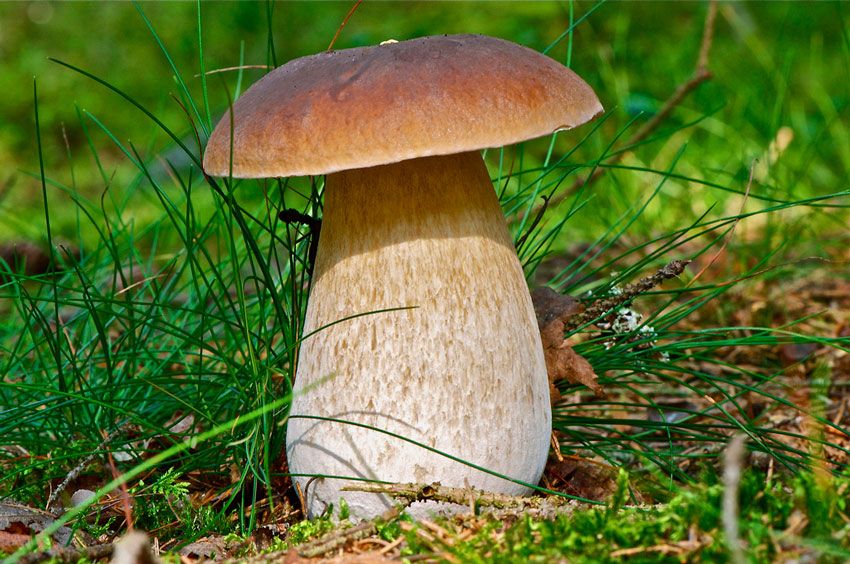
Not just in September
Don't limit your search to autumn. This species of Boletus loves rain, and its growth depends heavily on it. In some regions, it is normal to see the first Boletus mushrooms in spring, and in others, with a milder climate, they are even harvested in winter!
Warm and rainy
It must rain a lot and the temperature must not be too cold for it to appear, but there must always be no wind. Wind is the number one enemy of Boletus edulis. All you need to do is wait for a good storm after a dry spell to see the first edulis appear. If these rains alternate with dry days and the temperature remains pleasant, the Boletus will continue to appear and grow for quite some time afterwards.
Low-slope areas
It is in these areas where water stagnates and flows less quickly during rainfall. As a result, there is a greater chance of finding porcini mushrooms and other types of mushrooms. Porcini mushrooms also like clearings and tend to grow alongside other plants such as heather.
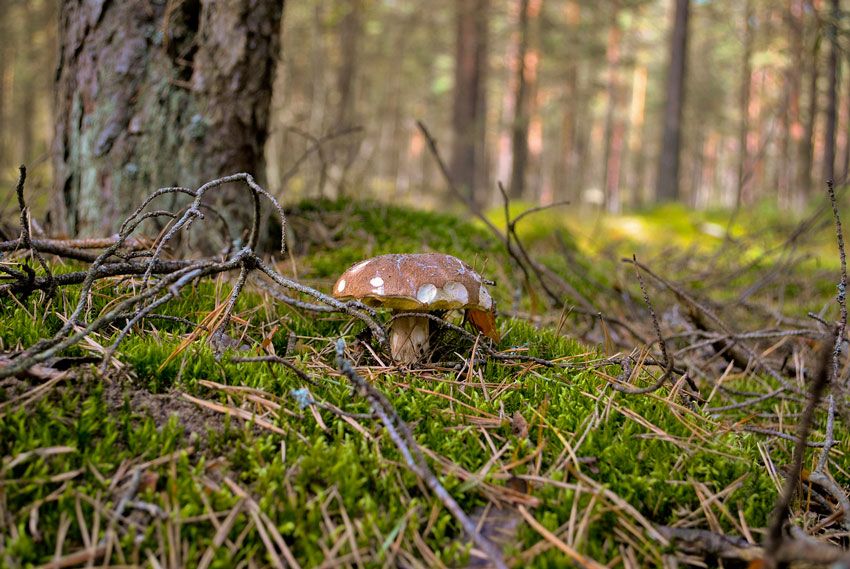
Look in the most unexpected places
Boletus mushrooms can grow in many places, and the place you least expect to find them may be one of them. What's more, these mushrooms change color slightly depending on where they grow. They therefore have different shades depending on the type of wood.
Analyze the mushrooms
By looking at just one edulis, we can learn a lot about future blooms. By observing carefully, we can analyze whether the color of the cap is too light or if it is cracked. If this happens, it is a sign of little rain, so you should not be very optimistic about future harvests. Unless it rains heavily again.
Enjoy the moment
In just a few hours, a Boletus edulis can emerge and grow. It can even reach a considerable size! This depends greatly on the weather conditions. It is possible to find a specimen of this mushroom in an area you passed through a few hours earlier.
They prefer old trees
They are mycorrhized with specimens that are over 20 years old, unlike delicious milk caps, which prefer young pines. If they are associated with rockroses, these must also be several years old, between 5 and 6 years.
Sensitive to thermal shocks
Beware of a sudden drop in soil temperature, below 14º-15º. This shock initiates the production of primordia. If this temperature is maintained for long enough and the humidity is adequate, you will only have to wait between 11 and 15 days to harvest. It is important that the soil temperature does not exceed 20º-21º in the following days.
They last a long time
A specimen of Boletus edulis reaches maturity 11 days after hatching. Until they decompose completely, they can take even more than 24 days. These figures depend greatly on the climate.
Help them reproduce
If we collect a specimen that is too mature, we can pull out the tubes, which in these cases are greenish in color. We will then crumble them in the surrounding area, helping to spread their spores and promoting the expansion of the mushroom. This will certainly help to develop the mycelium.
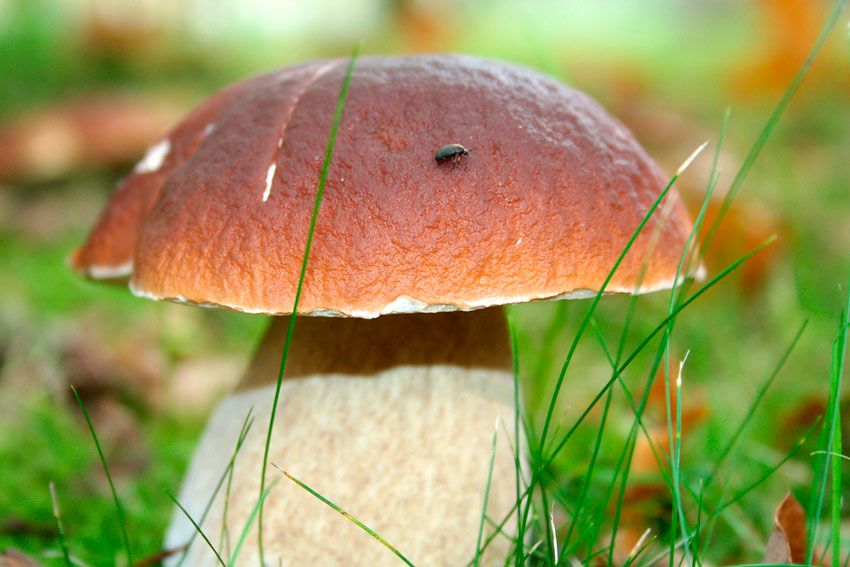
Can Boletus edulis be confused with other poisonous species?
It is difficult to confuse it with an inedible or poisonous species, although it may bear similarities to Tylopilus felleus or Boletus badius. However, the most common cases of confusion are with other edible boletes, such as Boletus reticulatus or summer bolete, Pinophilus or pine bolete, and Aereus or black bolete. which is why, if in doubt, we recommend consulting your mushroom guide, where you will find all the information you need to know whether the mushroom you are dealing with is edible or not.
In addition, the Boletus shares its habitat with the Amanita muscaria, which is why mushroom pickers know it as chivata del edulis. Both species always appear on acidic soils with a similar pH. If we are looking for Boletus and find an Amanita muscaria, we will have to search carefully because there may be Boletus in the area, although this is not always the case.
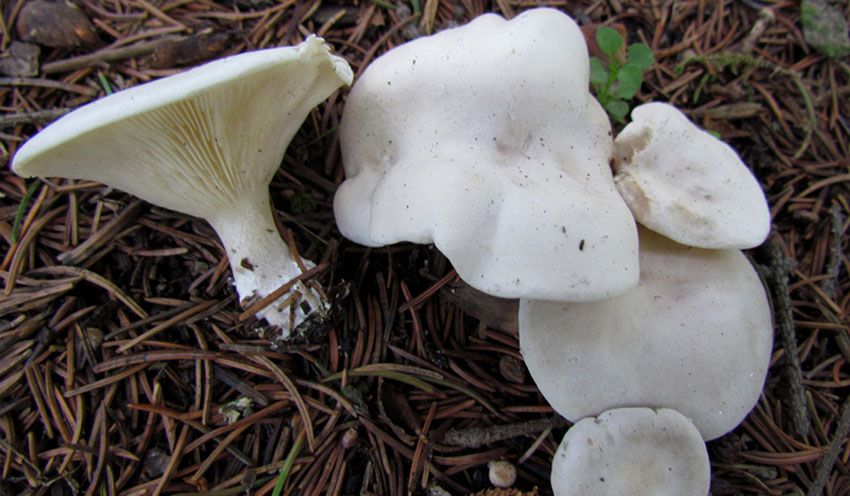
Beware of Clitopilus prunulus, the Boletus lookalike
The clavate par excellence of Boletus edulis is the miller's mushroom, Clitopilus prunulus. This mushroom shares not only the habitat but also the conditions for hatching, so it is more than likely that in the vicinity of where a clavate is found, there will also be one or more Boletus edulis nearby.
Care should be taken with this mushroom because its similarity to other highly toxic and even deadly mushrooms makes it one that should only be picked by experts. In addition, it is also considered excellent edible.
How to recognize Clitopilus prunulus?
Although it is considered an excellent edible mushroom, it is recommended not to harvest Clitocybe mushrooms. Their proximity to mushrooms of the Clitocybe genus, which are the same color, can cause unpleasant confusion. If, despite everything, we want to pick them, we must examine two very recognizable aspects.
The clitocybe has a smell of fresh flour, very similar to that of the morel mushroom.
In adult specimens, it is easy to distinguish its spore print, which is pinkish in color.
Photographs of Boletus edulis
Porcini mushroom, miguel, pumpkin, leek,. . . are just some of the popular names for this mushroom. It is the most prized trophy for mushroom pickers and is also extremely photogenic. Images of Boletus edulis are the most representative when illustrating a trip to the forest with photos. We leave you with this selection of photographs of edulis that are sure to give you goose bumps.
Now that we've told you all about the secrets and characteristics of Boletus edulis, all you have to do is get your mushroom picking gear ready and head out to the mountains to find some. And don't forget to let us know how you get on!
If you liked it, share it with your mushroom-picking friends and give us a “like”: -).

Te pueden interesar